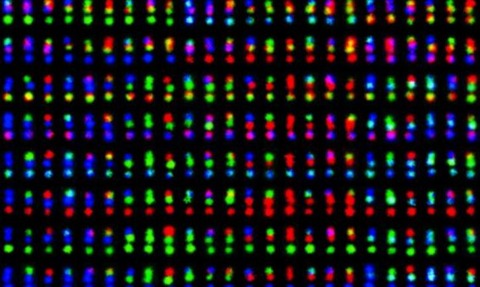US scientists engineer novel DNA barcode
25 Sep 2012

Researchers at Harvard’s Wyss Institute have developed a DNA barcode that could improve biomedical imaging.
Currently DNA barcodes only come in a handful of “styles,” limiting the number of objects scientists can study in a cell sample at any one time.
Researchers at the Wyss Institute have created a new kind of barcode that could come in an almost limitless array of styles – with the potential to enable scientists to gather vastly more vital information.
The method harnesses the natural ability of DNA to self-assemble.
“We hope this new method will provide much-needed molecular tools for using fluorescence microscopy to study complex biological problems,” said Peng Yin, Wyss core faculty member and study co-author.
In fluorescence microscopy, scientists couple fluorescent elements – the barcodes – to molecules they know will attach to the part of the cells they wanted to investigate.
Illuminating the sample triggers each kind of barcode to fluoresce at a particular wavelength of light, such as red, blue, or green – indicating where the molecules of interest are.
However, the method is limited by the number of colours available – three or four – and sometimes the colours become blurry.
With the new technique, coloured-dots can be arranged into geometric patterns or fluorescent linear barcodes, and the combinations are almost limitless.
The intrinsic rigidity of the engineered DNA nanostructures is this method’s greatest advantage
DNA origami follows the basic principles of the double helix in which the molecular bases A (adenosine) only bind to T (thymine), and C (cytosine) bases only bind to G (guanine).
With those “givens” in place, a long strand of DNA is programmed to self-assemble by folding in on itself with the help of shorter strands to create predetermined forms – much like a single sheet of paper is folded to create a variety of designs in the traditional Japanese art.
To these more structurally complex DNA nano-structures, researchers can then attach fluorescent molecules to the desired spots, and use origami technology to generate a large pool of barcodes out of only a few fluorescent molecules. That could add a lot to the cellular imaging “toolbox” because it enables scientists to potentially light up more cellular structures than ever possible before.
“The intrinsic rigidity of the engineered DNA nanostructures is this method’s greatest advantage; it holds the fluorescent pattern in place without the use of external forces. It also holds great promise for using the method to study cells in their native environments,” Yin said.
As proof of concept, the team demonstrated that one of their new barcodes successfully attached to the surface of a yeast cell.

